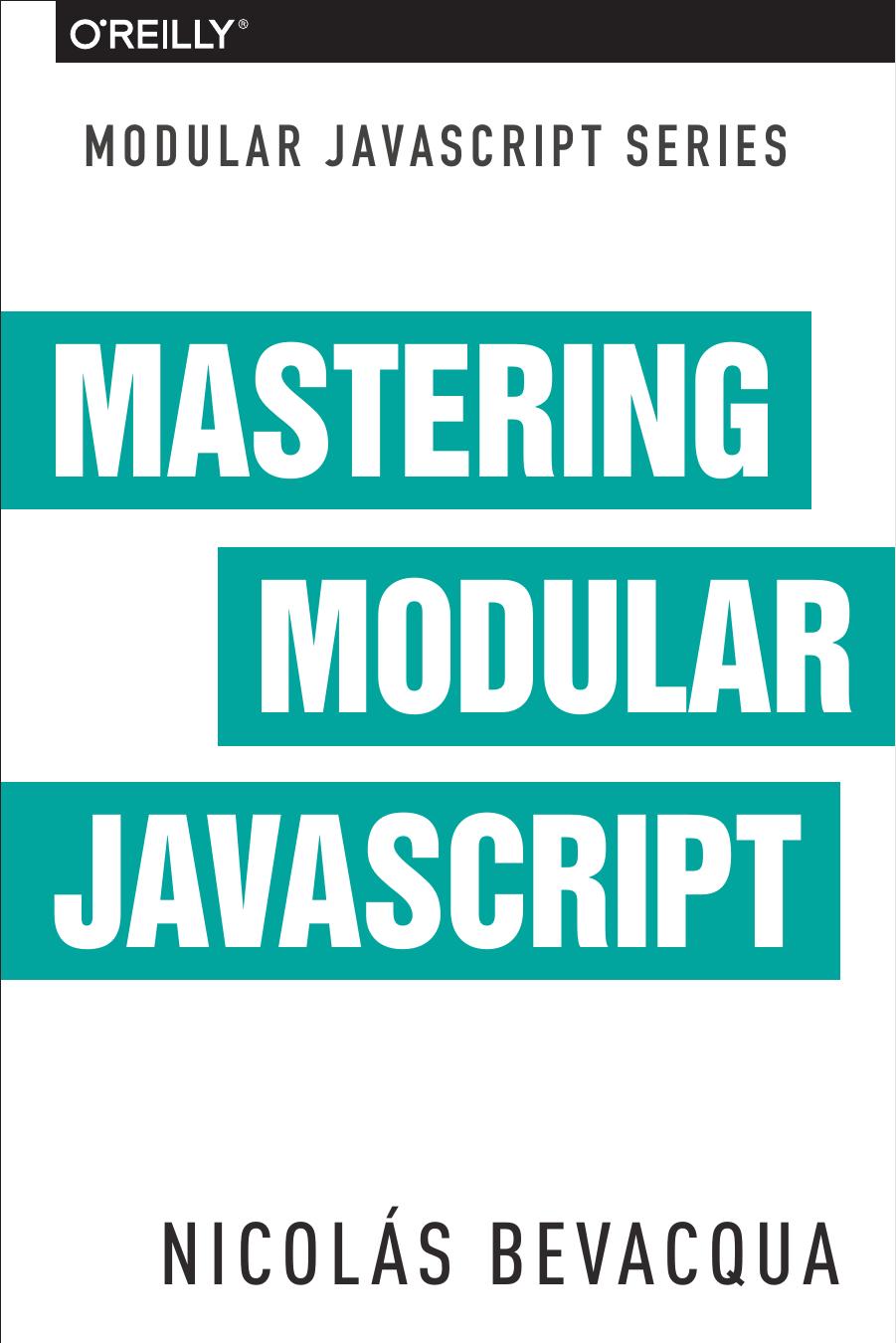Mastering Modular JavaScript by Nicolás Bevacqua

Author:Nicolás Bevacqua
Language: eng
Format: epub, mobi, pdf
Publisher: O'Reilly Media, Inc.
Published: 2018-09-02T16:00:00+00:00
4.1.3 Frameworks: The Good, the Bad, and the Ugly
Conventions are useful because they allow for better self-direction among developers, without causing lagoons of inconsistency to spread across our codebase. Chaos would ensue should we allow a team of developers too much freedom without sound design direction and conventions that dictate how different portions of an application should be shaped. A large number of conventions might hinder productivity, especially if some of our conventions appeared to work as if by magic.
When it comes to conventions, frameworks are a special case. Frameworks are packed to the brim with conventions and best practices. Some of them live in the library and tooling ecosystem around the framework, while many live in the shape our code takes when we rely on that framework. Upon adopting a framework, we’re buying into its conventions and practices. Most modern JavaScript frameworks offer ways of breaking our application into small chunks, regardless of whether the framework is for the client or server.
Express has middleware and routes; AngularJS has directives, services, and controllers; React has components; and so on and so forth. These conventions and abstractions are tremendously helpful to keep complexity in check while building an application. As our components grow larger, regardless of the abstraction or framework of choice, things will get more complicated. At this moment, we usually can refactor our code into smaller components that are then wrapped with larger ones, preserving separation of concerns, and keeping complexity on a short leash.
Eventually, we’ll come across requirements that don’t exactly fit the mold proposed by our framework of choice. Generally, this means that the required functionality belongs on a separate layer. For example, Express in Node.js is a framework concerned with handling HTTP requests and serving responses. If one of our API endpoints needs to result in an email being sent, we could embed email-sending logic in the controller for that API endpoint. However, if an API endpoint controller is already concerned with, say, publishing blog posts, then it would be hardly right to embed email-sending logic on that same controller since it’s a different concern entirely. Instead, what we could do is create a subscribers service component, with functionality such as subscribe, which adds a subscriber after verifying their email, and notify, which takes care of sending the emails. Taking this idea further still, perhaps most of the work in subscribers.notify should occur via yet another service component called emails, which takes care of properly configuring our email-sending capability, and also has functionality to turn would-be emails into plain console.log statements for quick access to the contents of the emails during debug sessions.
Having clearly defined layers is paramount to the design of effective and maintainable applications once we’re past the prototyping stages. Layers can be made up of components that follow the conventions proposed by the frameworks we use, or they can be self-imposed, like the service layer discussed in the previous paragraph. Using layers, and as long as we favor function parameters over scope for
Download
Mastering Modular JavaScript by Nicolás Bevacqua.mobi
Mastering Modular JavaScript by Nicolás Bevacqua.pdf
This site does not store any files on its server. We only index and link to content provided by other sites. Please contact the content providers to delete copyright contents if any and email us, we'll remove relevant links or contents immediately.
| Coding Theory | Localization |
| Logic | Object-Oriented Design |
| Performance Optimization | Quality Control |
| Reengineering | Robohelp |
| Software Development | Software Reuse |
| Structured Design | Testing |
| Tools | UML |
The Mikado Method by Ola Ellnestam Daniel Brolund(20667)
Hello! Python by Anthony Briggs(19959)
Secrets of the JavaScript Ninja by John Resig Bear Bibeault(18276)
Dependency Injection in .NET by Mark Seemann(18162)
The Well-Grounded Java Developer by Benjamin J. Evans Martijn Verburg(17636)
OCA Java SE 8 Programmer I Certification Guide by Mala Gupta(17467)
Kotlin in Action by Dmitry Jemerov(17250)
Adobe Camera Raw For Digital Photographers Only by Rob Sheppard(16937)
Algorithms of the Intelligent Web by Haralambos Marmanis;Dmitry Babenko(16280)
Grails in Action by Glen Smith Peter Ledbrook(15436)
Test-Driven iOS Development with Swift 4 by Dominik Hauser(10406)
Becoming a Dynamics 365 Finance and Supply Chain Solution Architect by Brent Dawson(8056)
Microservices with Go by Alexander Shuiskov(7820)
Practical Design Patterns for Java Developers by Miroslav Wengner(7722)
Test Automation Engineering Handbook by Manikandan Sambamurthy(7672)
Angular Projects - Third Edition by Aristeidis Bampakos(7160)
The Art of Crafting User Stories by The Art of Crafting User Stories(6611)
NetSuite for Consultants - Second Edition by Peter Ries(6533)
Demystifying Cryptography with OpenSSL 3.0 by Alexei Khlebnikov(6305)
